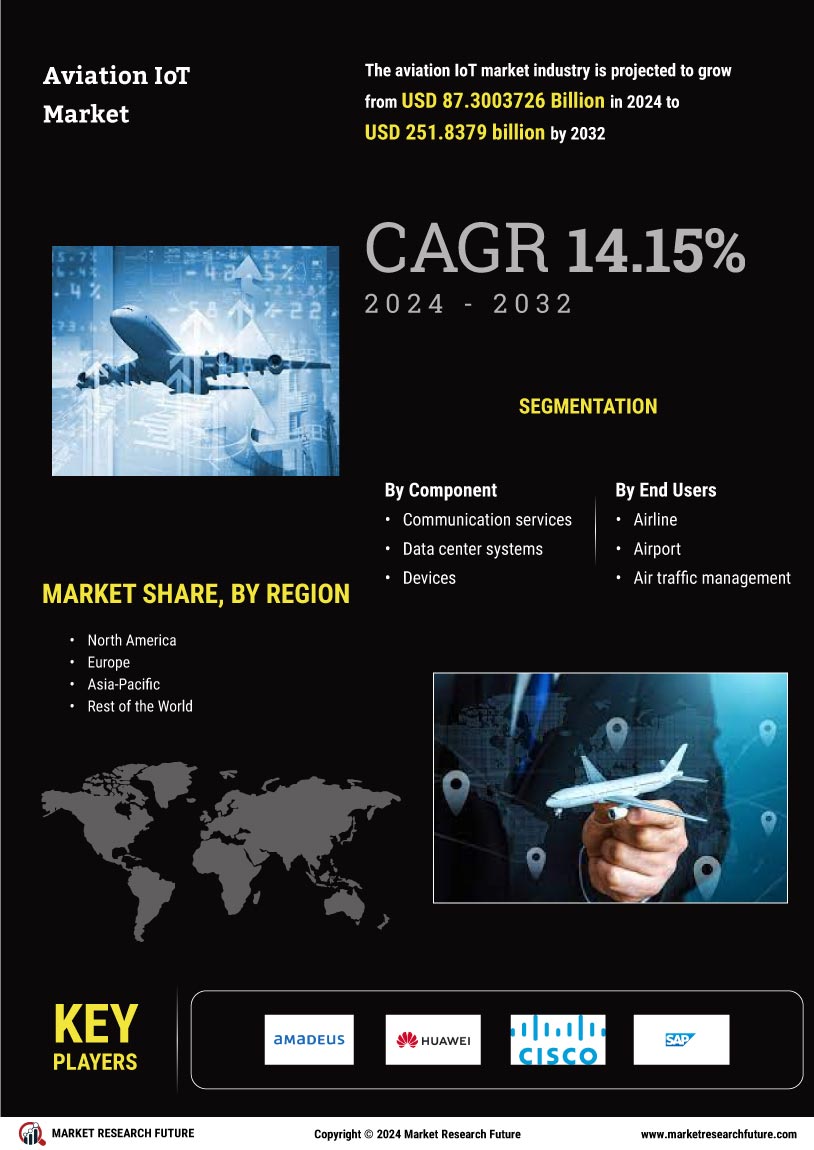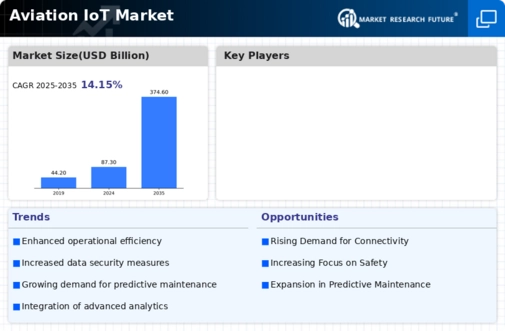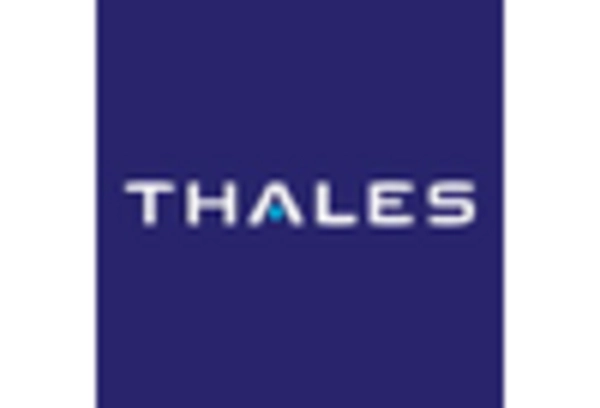Market Growth Projections
The Global Aviation IoT Market Industry is poised for substantial growth, with projections indicating a market value of 87.3 USD Billion in 2024 and an anticipated increase to 374.6 USD Billion by 2035. This growth trajectory reflects a compound annual growth rate of 14.16% from 2025 to 2035. The increasing adoption of IoT technologies across various aviation sectors, including airlines, airports, and maintenance providers, is driving this expansion. As stakeholders recognize the potential benefits of IoT solutions, investments in innovative technologies are expected to rise, further enhancing the industry's growth prospects.
Focus on Safety and Security
Safety and security remain paramount in the Global Aviation IoT Market Industry. The integration of IoT devices enhances monitoring capabilities, allowing for real-time tracking of aircraft and cargo. For example, predictive maintenance powered by IoT sensors can identify potential mechanical failures before they occur, significantly reducing the risk of accidents. This focus on safety is likely to drive investments in IoT technologies, as stakeholders prioritize the protection of passengers and assets. As a result, the market is anticipated to expand, reaching 374.6 USD Billion by 2035.
Increased Demand for Connectivity
The Global Aviation IoT Market Industry experiences a surge in demand for enhanced connectivity solutions. Airlines and airports are increasingly adopting IoT technologies to improve operational efficiency and passenger experience. For instance, real-time data analytics enables airlines to optimize flight schedules and reduce delays. This trend is expected to contribute to the market's growth, with projections indicating a market value of 87.3 USD Billion in 2024. Enhanced connectivity not only streamlines operations but also fosters a more engaging travel experience, which is crucial in a competitive landscape.
Regulatory Compliance and Standards
The Global Aviation IoT Market Industry is influenced by stringent regulatory requirements aimed at ensuring safety and operational efficiency. Governments worldwide are establishing standards for the use of IoT technologies in aviation. Compliance with these regulations often necessitates the adoption of advanced IoT solutions, which can lead to increased operational costs. However, this regulatory landscape also presents opportunities for growth, as companies invest in IoT systems to meet compliance requirements. The anticipated compound annual growth rate of 14.16% from 2025 to 2035 underscores the potential for market expansion driven by regulatory compliance.
Emerging Technologies and Innovations
The Global Aviation IoT Market Industry is witnessing a wave of emerging technologies that are reshaping the aviation landscape. Innovations such as artificial intelligence, machine learning, and blockchain are being integrated with IoT solutions to enhance data analytics and decision-making processes. For example, AI-driven analytics can predict passenger behavior, enabling airlines to tailor services and improve customer satisfaction. The continuous evolution of technology is likely to attract investments and foster collaboration among industry stakeholders, further propelling market growth in the coming years.
Operational Efficiency and Cost Reduction
Operational efficiency is a critical driver in the Global Aviation IoT Market Industry. Airlines are leveraging IoT technologies to streamline processes, reduce fuel consumption, and minimize maintenance costs. For instance, IoT-enabled fuel management systems provide real-time data on fuel usage, allowing airlines to optimize consumption and reduce expenses. This focus on efficiency not only enhances profitability but also contributes to sustainability efforts within the industry. As the market evolves, the integration of IoT solutions is expected to play a pivotal role in achieving operational excellence and driving growth.

















Leave a Comment